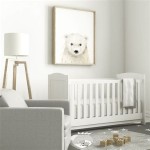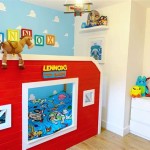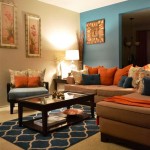How to Decorate a Very Large Dining Room
A very large dining room presents both opportunities and challenges in interior design. The generous space allows for creative expression and the incorporation of various functional and aesthetic elements. However, it also requires careful planning to avoid a cavernous, impersonal atmosphere. Successful decoration involves scaling furniture appropriately, defining zones within the room, and implementing design choices that foster intimacy and visual appeal.
Scaling Furniture and Furnishings
One of the most crucial aspects of decorating a large dining room is selecting furniture that is proportional to the size of the space. Standard-sized dining tables and chairs may appear diminutive and lost in a large room. Therefore, opting for a larger dining table is often necessary. Consider rectangular or oval tables that can comfortably accommodate a significant number of guests. In addition, explore custom-built options to perfectly match the room's dimensions and desired aesthetic.
Beyond the dining table, other furniture pieces should be equally substantial. Sideboards, buffets, and china cabinets should be appropriately sized to complement the table and contribute to the overall visual balance. Avoid overcrowding the room; instead, select a few key pieces that are well-proportioned and serve a practical purpose. Overly small furniture creates a disjointed and visually jarring effect.
Rugs play a vital role in defining the dining area and anchoring the furniture. A rug that is too small will make the room feel incomplete and emphasize its vastness. Choose a rug that extends at least two to three feet beyond the edges of the dining table when chairs are pulled out. This ensures that the chairs remain on the rug even when occupied, creating a cohesive and unified look. Material selection and pattern should align with the overall design style of the room. For example, a traditional dining room might benefit from an ornate oriental rug, while a modern space could feature a geometric or abstract design.
Lighting fixtures are also crucial for scaling. A single, small chandelier will be insufficient in illuminating a large dining room and will appear insignificant. Instead, consider a large-scale chandelier or a combination of multiple lighting sources. Options include pendant lights, recessed lighting, wall sconces, and floor lamps. The lighting should be layered to provide both ambient and task lighting, creating a warm and inviting atmosphere. The size of the chandelier should be proportional to the table; a general guideline is to add the room's length and width in feet, and that number in inches should be the diameter of the chandelier. For example, a room that is 20 feet by 15 feet would ideally have a chandelier with a diameter of about 35 inches.
Defining Zones within the Dining Room
Large dining rooms often benefit from being divided into distinct zones to create a more intimate and functional space. This can be achieved through the strategic placement of furniture, rugs, and architectural elements. Consider creating a separate seating area for pre-dinner cocktails or after-dinner conversation. This area could include comfortable chairs, a small table, and a decorative rug. A bar area or beverage station can also be incorporated to streamline serving and entertaining.
Using area rugs is a very easy way to visually delineate specific zones. Each zone can be defined by a rug that corresponds with the colors of the furniture in the area. For example, the dining table area could have a rug with warm earth tones, while the seating area might have a rug with cooler blues and greys. This helps to break up the space and create a more defined sense of purpose for each area.
Architectural elements can also be used to create a more defined division. A half-wall or a set of decorative columns can subtly separate the dining area from the seating area. Consider adding a built-in bookcase or display cabinet to create a focal point and further define zones. These elements not only create visual interest but also provide practical storage and display space. The use of screens, either fixed or movable, is another option. These can add a decorative element while visually dividing the room. Shoji screens can add an Asian influence, while more modern screens can give a contemporary feel.
Even color schemes can play an important role in defining zones. Utilizing different, yet complementary, color palettes can help distinguish individual areas within the large dining room. For instance, a warmer, more saturated color can be used in the dining area to create a sense of intimacy, while a lighter, more neutral color can be employed in the seating area to promote a more relaxed atmosphere.
Creating Intimacy and Visual Appeal
Large dining rooms can sometimes feel cold and impersonal. Therefore, it is important to incorporate design elements that foster intimacy and visual appeal. One effective technique is to use warm colors and textures. Paint the walls in rich, inviting hues such as warm grays, deep blues, or earthy greens. Incorporate fabrics with texture, such as velvet, linen, or wool, in the upholstery and window treatments. These materials add depth and warmth to the space, making it feel more inviting.
Artwork and accessories play a critical role in adding personality and visual interest. Large-scale paintings, sculptures, and decorative objects can fill the space and create focal points. Consider creating a gallery wall with a collection of framed prints or photographs. Choose artwork that complements the overall design style and color palette of the room. Mirrors can also be used to enhance the sense of space and reflect light, making the room feel brighter and more open. However, be mindful of what the mirror reflects; it should ideally reflect something visually appealing.
Window treatments are very important within a large dining room. Bare windows can contribute to a cold and stark atmosphere. Install curtains, drapes, or blinds to add softness and privacy. Choose fabrics that complement the overall design style and color palette of the room. Consider layering window treatments, such as combining sheer curtains with heavier drapes, for added texture and dimension. Motorized window treatments can be useful for controlling natural light and privacy in a large room.
Introduce greenery and floral arrangements to bring life and vitality into the dining room. Potted plants, floral centerpieces, and arrangements of branches can add a touch of nature and create a more welcoming atmosphere. Choose plants that are appropriate for the lighting conditions and the overall style of the room. Consider using large-scale planters to make a statement and fill empty corners. Seasonal floral arrangements can also add festive cheer and visual interest throughout the year.
Lighting plays a pivotal role in establishing the mood and ambiance. Using a dimmer switch for the main chandelier to adjust the level of illumination to be warmer and softer is an easy change. Consider adding accent lighting, such as spotlights or track lighting to highlight artwork or architectural features. Candles and decorative lanterns can also add a warm and inviting glow. Smart lighting systems can offer customizable lighting schemes and automated control, enhancing the overall ambiance and functionality of the dining room.
Consider adding small details such as trim and crown molding to bring the walls to life. This will detract from the sheer size of the room while also adding an element of cozy intimacy to the room. These details can be customized to the style that best fits the existing space. Adding a fireplace can bring both warmth and comfort to the dining room, especially in colder climates. It can also serve as a focal point, drawing the eye and creating a sense of coziness. A gas fireplace offers convenience and ease of use, while a wood-burning fireplace adds a traditional and rustic charm.
Ultimately, decorating a very large dining room requires careful planning, attention to scale, and consideration of the overall design aesthetic. By scaling furniture appropriately, defining zones within the room, and incorporating design choices that foster intimacy and visual appeal, a large dining room can be transformed into a beautiful and functional space that is perfect for entertaining and everyday living. Choosing the right furniture, lighting, decor and accents can enhance a large dining room, turning it into an enjoyable and welcoming area.

25 Ideas For Your Dining Room Trendbook Trend Forecasting
Dining Room Guide How To Maximize Your Layout

80 Best Dining Room Ideas And Decorating Tips

30 Best And Plush Dining Room Decoration Ideas For Your Home

How To Decorate A Large Blank Wall An Inspiring Home Transitional Dining Room Decor Modern

90 Dining Room Ideas And Designer Approved Decorating Tips

20 Ways To Dress Up Dining Room Walls Wall Decor

90 Dining Room Ideas And Designer Approved Decorating Tips

80 Best Dining Room Ideas And Decorating Tips

Large Wall Art Is Modern And Dramatic In This Beautiful Dining Room Midcenturymodern Wallart Chandelier Neutrals On Point Luxeathome Sandow Phot
Related Posts







